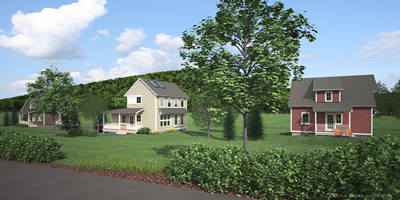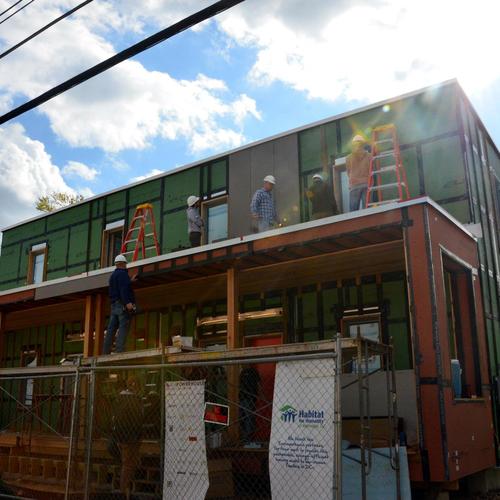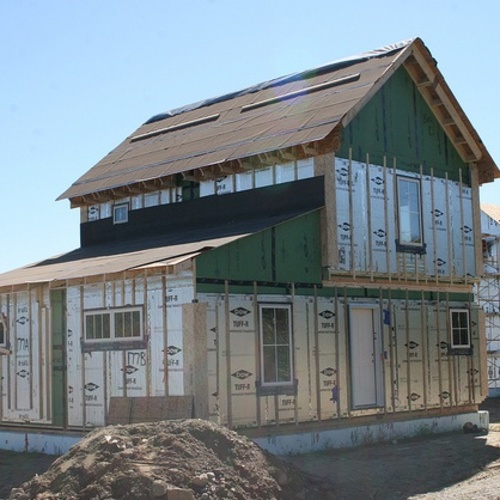
Image Credit: Green Mountain Habitat for Humanity
Among the most important benefits of homes that merge affordability with ambitious energy efficiency standards are, of course, satisfied homeowners and their reduced carbon footprint. But another, far-reaching potential upside is that such projects can illuminate potent strategies and techniques for future projects.
That is where things seem to be headed in northwest Vermont, where Green Mountain Habitat for Humanity is collaborating with a number of businesses and agencies on plans for a three-home development on a three-acre parcel in Charlotte, where the first home will incorporate standards set by the Passive House Institute US.
A template for the future?
Green Mountain Habitat’s executive director, David Mullin, recently told the Burlington Free Press that, for the first home, the affiliate is drawing on technical support from institutions such as the nonprofit Vermont Energy Investment Corporation; Civil Engineering Associates, in South Burlington; Charlotte-based Passive House consultant Peter Schneider; and Passive House specialists J. B. Clancy of Albert, Righter & Tittmann Architects, in Boston. Construction on the house is expected to begin this summer.
The second home, the story points out, will be designed by Vermont architect Eric Morrow, while the configuration of the third will be determined after the first two houses are completed.
Mullin said the building envelopes will be designed to create a “village look” rather than row-house regimentation. No doubt the homes will be sources of considerable pride and comfort for the families who help build and eventually own and occupy them. But the development of these homes to unusually high performance standards could be even more significant for future projects, whether they’re managed by Green Mountain Habitat, other Habitat affiliates, or, perhaps, many other affordable-housing builders.
“Green Mountain Habitat will gain a great deal of experience during the design and construction of the first two homes, which will act as a powerful teaching tool,” Schneider noted. “The lessons learned will guide the design for the third home and possibly many future Habitat for Humanity homes.”
Weekly Newsletter
Get building science and energy efficiency advice, plus special offers, in your inbox.















0 Comments
Log in or create an account to post a comment.
Sign up Log in